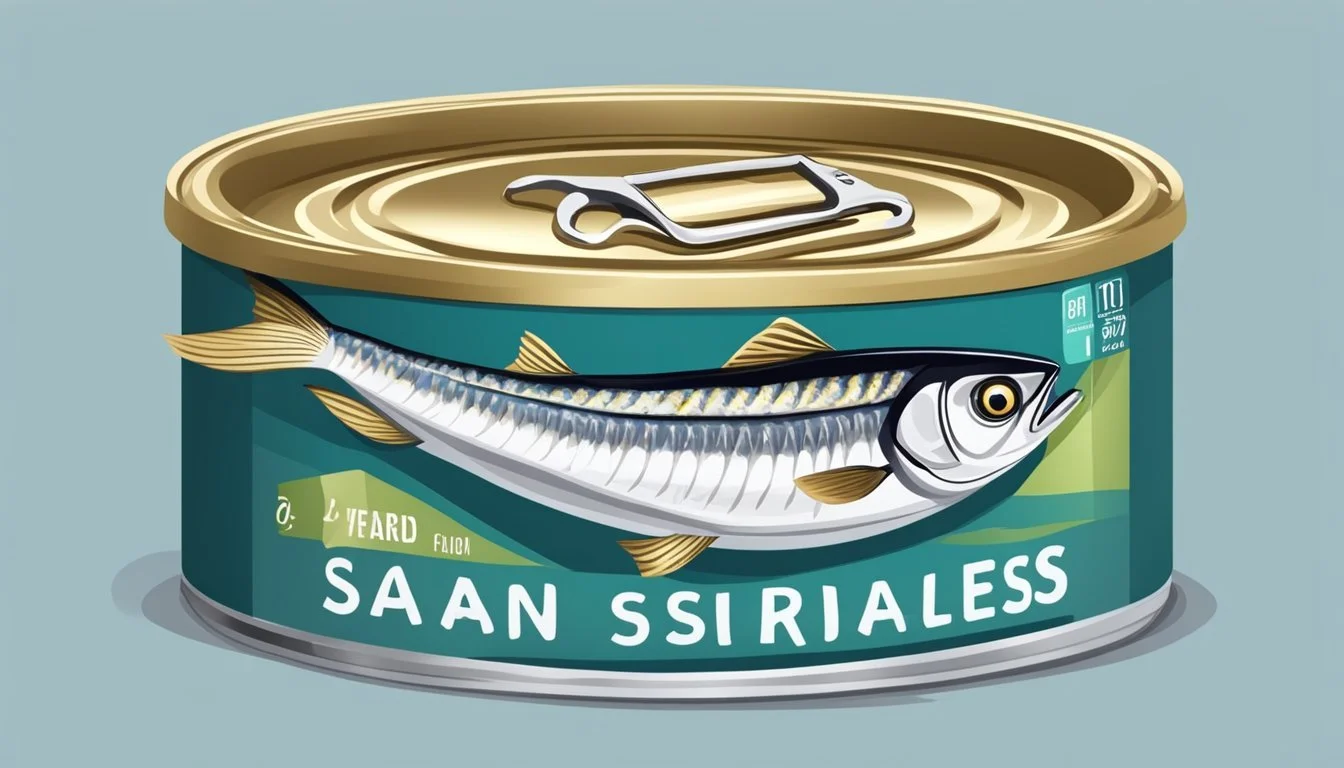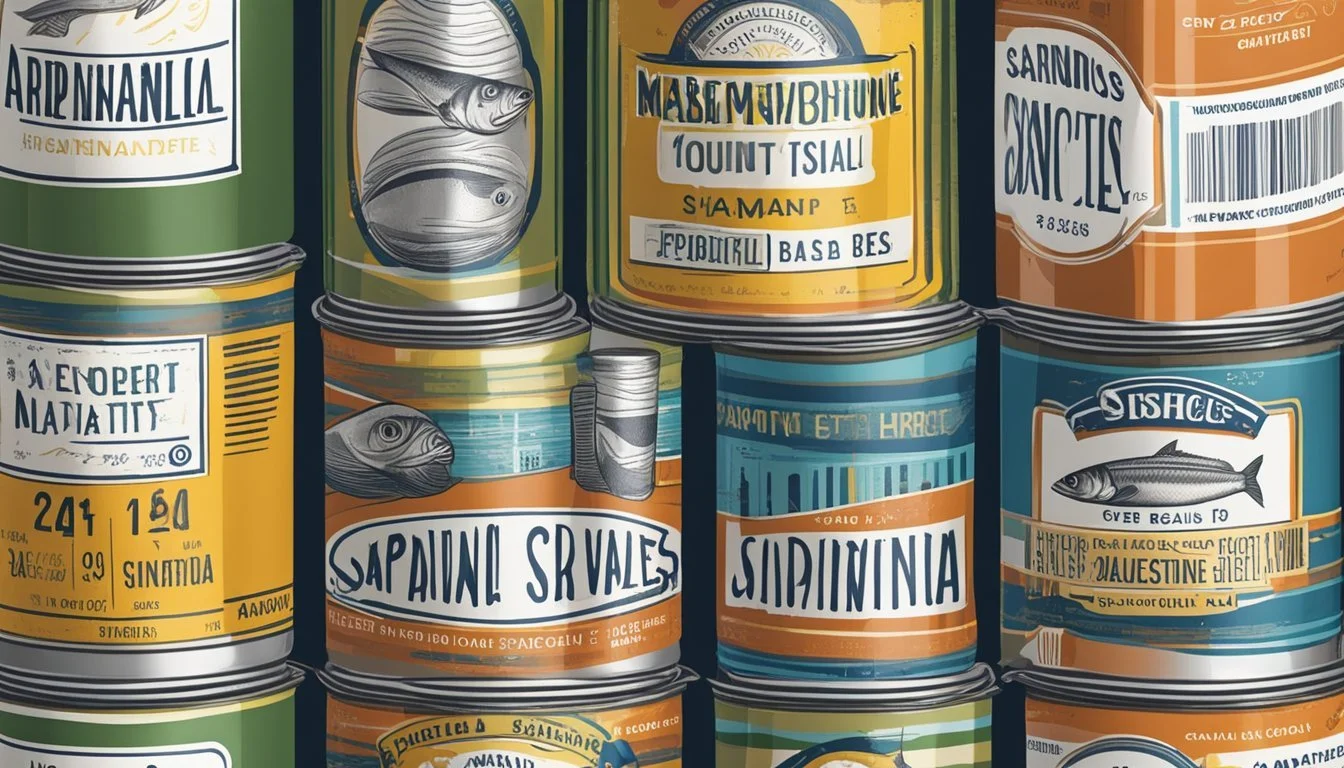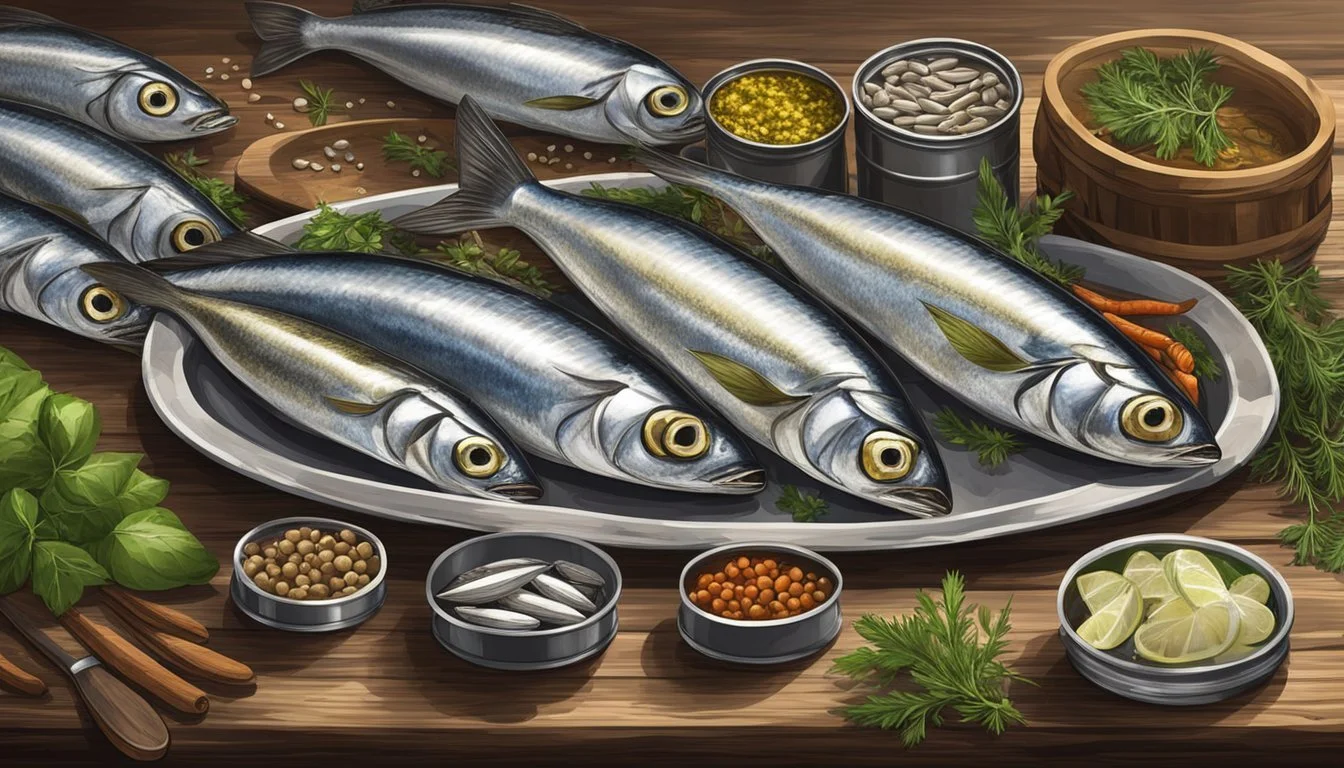Do Canned Sardines Go Bad?
Shelf Life and Storage Tips
Canned sardines, known for their long shelf life and nutritional benefits, are a staple in many households. Yes, canned sardines can go bad, and it is essential to check for signs of spoilage before consumption. Key indicators of spoiled sardines include a foul odor, change in color or texture, and any bulging or leaking cans.
Despite their potential to spoil, canned sardines offer considerable health benefits, packed with omega-3 fatty acids, protein, and essential vitamins. However, consuming spoiled sardines can lead to foodborne illnesses, underscoring the importance of proper storage and regular checks on the product’s condition.
Knowing how to determine the quality and safety of canned sardines ensures you enjoy their taste and health advantages without risk. By the end of this article, readers will understand the longevity of canned sardines and how to identify when they should be discarded.
Understanding Canned Sardines
Canned sardines offer significant health benefits, thanks to their rich nutritional profile. The canning process helps preserve these nutrients while extending the shelf life of the fish.
Health Benefits of Sardines
Sardines are particularly high in omega-3 fatty acids, which are essential for maintaining cardiovascular health. Regular consumption of omega-3s can help lower the risk of heart disease and reduce inflammation. Sardines also contain vitamin B12, which supports cognitive health and helps prevent anemia.
Additionally, sardines are rich in calcium and vitamin D, vital for bone health. They offer a good source of protein, aiding muscle repair and growth. Eating sardines can contribute to a balanced diet and provide nutrients that are often hard to obtain from other foods.
Nutritional Profile of Sardines
A single serving of sardines typically contains:
Omega-3 Fatty Acids: Beneficial for heart and brain health.
Protein: Essential for muscle repair.
Calcium: Supports bone density.
Vitamin D: Crucial for calcium absorption.
Vitamin B12: Supports nerve function and helps produce DNA.
Sardines are also rich in other vitamins like niacin, and minerals such as selenium and phosphorus. This comprehensive nutrient package makes sardines a valuable addition to any diet.
The Canning Process
The canning process involves cooking the sardines to eliminate bacteria and seal them in cans to maintain freshness. This process extends the shelf life of the fish, often ranging from two to five years. Proper storage helps maintain the quality and safety of the canned sardines over time.
The canning also locks in nutrients, ensuring that the sardines retain their omega-3 fatty acids, protein, and vitamins. Canned sardines offer a convenient and long-lasting option for incorporating seafood into one's diet, with minimal preparation needed. This makes them a practical choice for those looking to boost their nutrient intake while enjoying the benefits of seafood.
Identifying Freshness and Spoilage
Knowing how to identify the freshness of canned sardines and recognize spoilage is crucial to ensure you are consuming a safe and nutritious product. This involves looking for specific signs that indicate whether the sardines are still good to eat or have gone bad.
Signs of Spoiled Canned Sardines
Canned sardines that have spoiled will often exhibit several warning signs. A foul smell is one of the most recognizable indicators; any off odor or unusual scent suggests the sardines should be discarded. Mold growth is another clear sign of spoilage and should be taken seriously.
Additionally, any can that is leaking, bulging, or severely dented should be considered compromised. These physical abnormalities can indicate contamination or spoilage. Discoloration or an unexpected change in the sardines' appearance also signals that they might not be safe to eat.
Evaluating the Quality
Assessing the quality of canned sardines involves several steps. First, check the expiration date on the can, although food can sometimes be safe to eat past this date, it’s a good initial gauge. After opening the can, observe the sardines' texture and color. Fresh canned sardines should have a consistent texture and a natural, oily sheen.
The taste and flavor are equally important in evaluating quality. Fresh sardines should taste mildly fishy with a rich, savory flavor. Any sour or metallic taste may indicate spoilage. Ensuring that the can itself shows no signs of damage is another important step in evaluating freshness.
Proper Storage Conditions
The longevity and safety of canned sardines largely depend on appropriate storage practices. Proper storage can prevent spoilage, extend shelf life, and ensure the sardines remain safe to eat.
Storing Unopened Canned Sardines
Unopened canned sardines should be stored in a cool, dry place. Optimal storage conditions include keeping them away from direct sunlight, heat, and moisture. High humidity and temperature can cause the can to rust and compromise the safety of the fish inside.
A cupboard or pantry, where temperatures remain steady, is ideal. Ensure the cans are not stacked in a way that might damage them. Always check the expiration date and rotate stock to use the oldest cans first.
Handling Opened Sardines
Once a can of sardines is opened, refrigeration is essential. Transfer the sardines to an airtight container and store them in the refrigerator. If left in the opened can, oxidation may occur, leading to spoilage.
For extended preservation, freezing is a viable option. Place the sardines in a heavy-duty freezer bag or airtight container before storing them in the freezer. While freezing may alter the texture, the sardines can still be used in cooked dishes like sauces, soups, or casseroles.
Proper handling of opened sardines ensures they remain safe to eat and reduces the risk of spoilage.
Extending the Shelf Life
Proper storage is essential for maximizing the shelf life of canned sardines. Specific techniques can help preserve their quality and safety for a longer period.
Freezing Techniques
Freezing canned sardines is an effective method to extend their shelf life. Start by transferring the sardines from the can to freezer-safe bags or airtight containers.
Label the bags with the date of freezing to keep track. Ensure that the freezer is set to a consistent low temperature, ideally around 0°F (-18°C).
To retain texture and flavor, avoid freezing sardines for longer than three months. When ready to use, thaw the sardines in the refrigerator overnight, not at room temperature.
Avoid using a microwave for thawing as it can affect the texture and taste. Properly stored and handled, frozen sardines can remain a viable food option for extended periods.
Health Risks and Allergies
Consuming canned sardines, while beneficial, can present health risks if not handled properly.
Improper storage can lead to bacterial growth, leading to food poisoning. Bacteria such as Clostridium botulinum can thrive in improperly canned foods. It's crucial to check the can for any corrosion, swelling, or leakage before consuming.
Fish allergies are another concern. People with a fish allergy might react to sardines, experiencing symptoms like hives, nausea, or even anaphylaxis in severe cases.
Pregnant women should be cautious. While sardines are generally low in mercury, it's important to ensure they’re sourced from high-quality brands with good manufacturing practices.
Potential contamination with heavy metals or other toxins can occur, though it is rare in sardines compared to larger fish.
Ensuring sardines are stored in a cool, dry place and consuming them before the expiration date can help mitigate these risks.
Key Points:
Bacterial contamination: Check cans for damage.
Fish allergies: Be aware of potential allergic reactions.
Pregnant women: Choose high-quality, low-mercury options.
Understanding Labels and Expiration Dates
Canned sardines have several important labels that consumers should be aware of. These labels provide vital information regarding the product's freshness and safety.
Interpreting Date Labels
Consumers will find a variety of date labels on canned sardines, such as expiration dates, best by dates, and date of manufacture. Each of these dates provides different information about the product's condition and longevity.
Expiration dates indicate the final day the manufacturer guarantees the product’s quality and safety. After this date, the sardines may still be edible but could lose texture and nutritional value. Best by dates suggest when the product will be at its highest quality. Lastly, the date of manufacture indicates when the sardines were canned, which helps determine their shelf life.
Understanding these labels is crucial for ensuring that canned sardines are both safe and enjoyable to eat.
Choosing the Right Canned Sardines
When selecting canned sardines, it's important to consider the type of packaging and the integrity of the can to ensure the product's quality and taste. Proper packaging not only preserves flavor but also helps prevent issues like rusting or leaking.
Types of Sardine Packaging
Canned sardines come in various types of packaging, including tins, pull-tab cans, and plastic containers. Tins are the most common and are sealed to protect the contents from air and light. They preserve the sardines' flavor and nutritional value effectively.
Pull-tab cans, while convenient, sometimes risk leaking if mishandled. Plastic containers are less common but offer a resealable option, which can be useful. However, they might not provide the same level of preservation as metal tins.
When choosing, consider if the sardines are skinless and boneless or whole. Some prefer the convenience of skinless and boneless, while others appreciate the richer flavor and texture of whole sardines. Additionally, check if they are packed in water, oil, or sauce, as this affects taste and dietary preferences.
Checking for Packaging Integrity
Assessing the integrity of the can is vital to avoid purchasing spoiled sardines. Look for signs of rust, which can compromise the quality and safety of the contents. Rusting indicates possible exposure to moisture, which can lead to contamination.
Make sure the can is not bulging, as this can signify that the contents have gone bad due to gas production by bacteria. Additionally, avoid cans with dents or signs of leaking, as these can weaken the seal and allow bacteria to enter.
By ensuring the packaging is intact and free from damage, one can enjoy the quality, taste, and health benefits of canned sardines without concern.
Preparation and Cooking Suggestions
Canned sardines are versatile and can be a tasty addition to many dishes. Whether sautéed, grilled, or eaten straight from the can, they can lend a unique flavor to meals.
Ways to Enjoy Canned Sardines
Sardines can be enjoyed in various ways to suit different tastes and dietary preferences.
Sautéing or Frying: Heat a bit of oil in a pan and add sardines. Fry until golden brown, which usually takes 3-4 minutes per side. This method adds a crispy texture and enhances flavor.
Over Rice or Couscous: Serve cooked sardines over a bed of rice or couscous. This combination complements the savory, rich taste of sardines.
Roasted Vegetables: Pair sardines with roasted vegetables for a balanced, nutritious meal. The robust flavor of sardines complements the sweetness of the vegetables.
Tacos or Wraps: Use sardines as a filling for tacos or wraps. Add fresh ingredients like lettuce, tomato, and a squeeze of lime to create a refreshing contrast.
Marinating: Enhance the flavor by marinating sardines in lemon juice, olive oil, and herbs before cooking. This step adds depth to the taste.
Try different methods to keep meals interesting and nutritious. The bold taste of sardines pairs well with a variety of other flavors.
Alternatives to Canned Sardines
For those looking to switch from canned sardines, several options exist that offer both variety and nutritional benefits.
Fresh Sardines: Fresh sardines provide a similar taste and nutritional profile. They can be grilled, baked, or pan-fried. Fresh sardines are rich in omega-3 fatty acids, just like their canned counterparts.
Tuna: Tuna is an excellent substitute readily available in both canned and fresh forms. It offers high protein content and essential nutrients. Be aware of mercury levels, especially in larger tuna species.
Mackerel: Mackerel is another oily fish that can replace sardines. Whether canned, smoked, or fresh, mackerel is rich in omega-3 fatty acids and vitamin D.
Anchovies: Anchovies are small and flavorful. They can be used in various recipes, such as salads and pasta dishes. They are also available in both canned and fresh forms.
Alternative Form Available Key Nutrients Fresh Sardines Fresh Omega-3, Protein, Calcium Tuna Canned, Fresh Protein, Omega-3, Vitamins Mackerel Canned, Fresh Omega-3, Vitamin D Anchovies Canned, Fresh Omega-3, Protein
Dietary Alternatives: For those with fish allergies or dietary preferences, plant-based options like chia seeds, flaxseeds, and walnuts are rich in omega-3 fatty acids. Seaweed also provides iodine and other minerals, making it a versatile alternative.
Salmon: Both fresh and canned salmon offer a rich source of omega-3 fatty acids, protein, and various vitamins. This fish is versatile and can be prepared in numerous ways, including baking, grilling, or pan-searing.
By exploring these alternatives, individuals can find suitable options that match their dietary needs and preferences.








